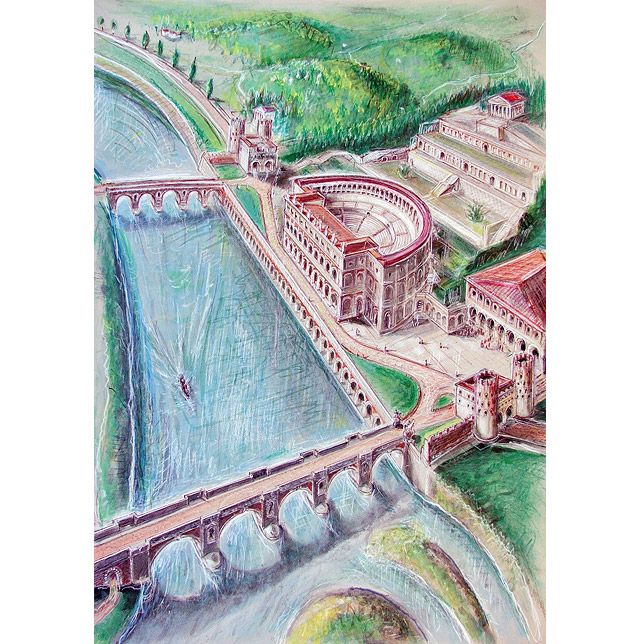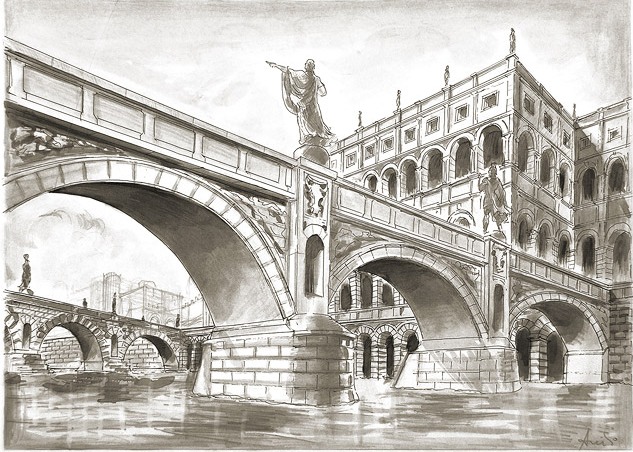
Ponti Lapideo e Postumio
(I sec. a.C.)
Nei primi tempi della presenza romana a Verona, molto prima della pianificazione urbanistica, venne costruito un ponte in pietra a 5 arcate in sostituzione di un precedente ponte ligneo; è il cosiddetto "Ponte della Pietra"; si può considerare il più antico manufatto di Verona. Il ponte non era in linea con la più recente via Postumia (146 a.C.) e lo si raggiungeva deviando per una vecchia strada parallela al fiume. Quando entrò in funzione il nuovo assetto urbano, in dirittura con il Decumano Massimo, venne costruito il "Ponte Postumio", quasi all'altezza della biforcazione del fiume. Fra i 2 ponti si inseriva la monumentale facciata del Teatro Romano. Il Ponte Postumio detto anche "Marmoreus" andò distrutto durante una alluvione nel IV secolo d.C. Il Ponte della Pietra, sia pure con vari rifacimenti, esiste tuttora ed è transitabile.
Bridges Lapideo and Postumio
(I century b.C.)
In the first time of the roman presence in Verona, before the urban plan, was built a stone bridge with 5 arcade which substituted the wood bridge.; it is the called Ponte Pietra which can be considered the most ancient artfact of Verona. The bridge was on the same direction with the street Postumia ( 146 b.C. ) and it was reached by a old street in front of the river.
When the new urban plan began to operate was built the bridge Postumio. Between the bridges there was the front of Teatro Romano. The bridge Postumio, called also “Marmoreus” was destroyed by a flood in the IV century p.C.
The Ponte Pietra nowadays is passable but it was many times renovated.









